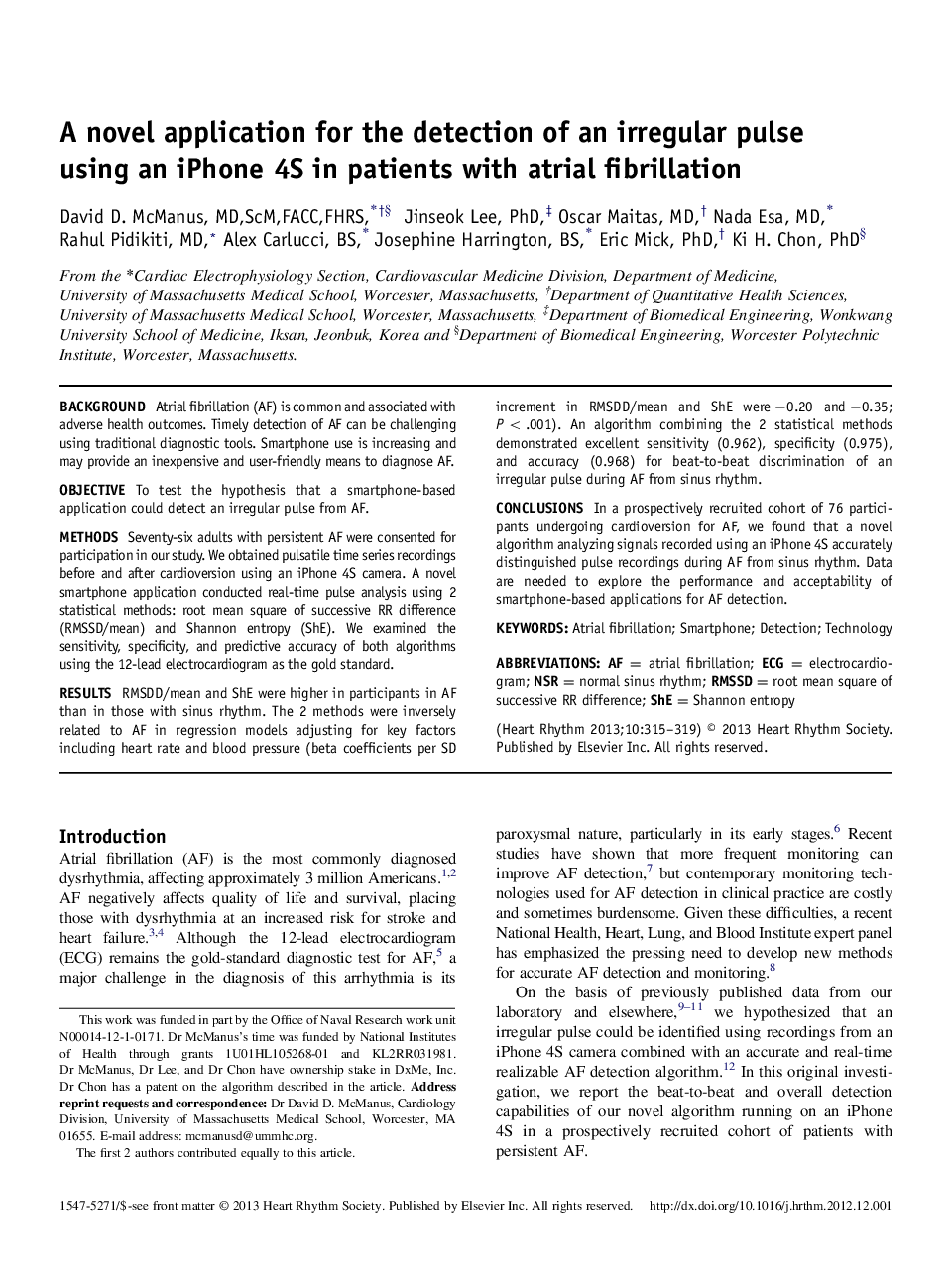| Article ID | Journal | Published Year | Pages | File Type |
|---|---|---|---|---|
| 2922222 | Heart Rhythm | 2013 | 5 Pages |
BackgroundAtrial fibrillation (AF) is common and associated with adverse health outcomes. Timely detection of AF can be challenging using traditional diagnostic tools. Smartphone use is increasing and may provide an inexpensive and user-friendly means to diagnoseAF.ObjectiveTo test the hypothesis that a smartphone-based application could detect an irregular pulse fromAF.MethodsSeventy-six adults with persistent AF were consented for participation in our study. We obtained pulsatile time series recordings before and after cardioversion using an iPhone 4S camera. A novel smartphone application conducted real-time pulse analysis using 2 statistical methods: root mean square of successive RR difference (RMSSD/mean) and Shannon entropy (ShE). We examined the sensitivity, specificity, and predictive accuracy of both algorithms using the 12-lead electrocardiogram as the gold standard.ResultsRMSDD/mean and ShE were higher in participants in AF than in those with sinus rhythm. The 2 methods were inversely related to AF in regression models adjusting for key factors including heart rate and blood pressure (beta coefficients per SD increment in RMSDD/mean and ShE were−0.20 and−0.35; P<.001). An algorithm combining the 2 statistical methods demonstrated excellent sensitivity (0.962), specificity (0.975), and accuracy (0.968) for beat-to-beat discrimination of an irregular pulse during AF from sinus rhythm.ConclusionsIn a prospectively recruited cohort of 76 participants undergoing cardioversion for AF, we found that a novel algorithm analyzing signals recorded using an iPhone 4S accurately distinguished pulse recordings during AF from sinus rhythm. Data are needed to explore the performance and acceptability of smartphone-based applications for AF detection.
